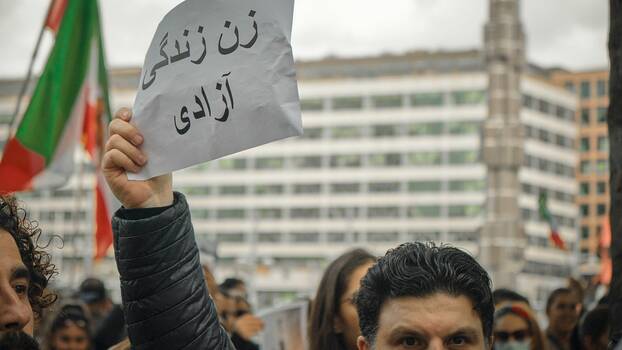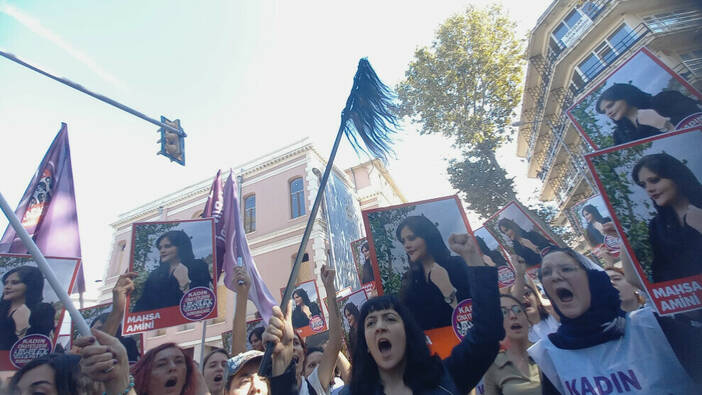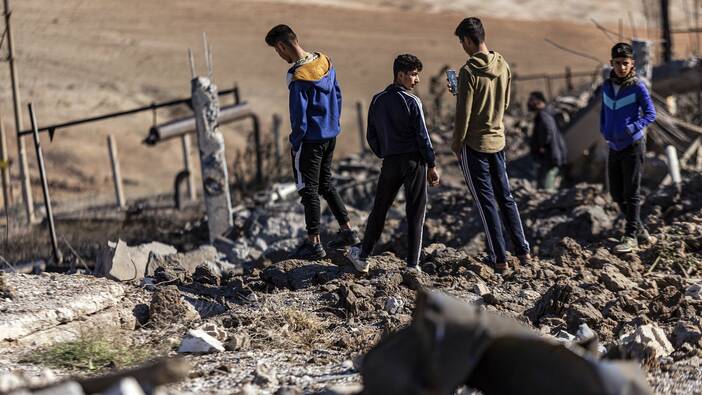
The massive anti-government protests and riots that followed the brutal death of the 22-year-old Kurdish woman Masha Amini in Iran while she was held in custody by the so-called morality police attracted attention and sparked controversy all over the Middle East and neighbouring states. Especially for Saudi Arabia, that considers Iran its major bitter rival in the region since the 1979 Islamic Iranian revolution, the protests in Iran represent a crucial moment in the historic conflict between these two countries.
Aliki Kosyfologou has a PhD in political science and sociology. Her recent publications include The Gendered Aspects of the Austerity Regime in Greece: 2010–2017, Women’s Status in a Struggling Greek Economy: The Terrifying Fall of a Society’s Progress, and Vulnerable Equality in Times of a Pandemic.
Moreover, while the Kingdom of Saudi Arabia did not enter the western anti-Russian alliance — at the beginning of October, it reaffirmed politically and symbolically the OPEC alliance and the global energy cartel and agreed with Russia on significant production cuts to raise prices — in the case of Iran, Saudi Arabia identifies itself as a pro-Western country and a loyal defender of Western interests in the region.
In addition to the above, the crisis in Iran provides a good pretext for the current Saudi regime to reinforce the impact of national narratives and propaganda about the westernized and moderately religious Saudi state in this post-pandemic era. These objectives are reflected in the way mainstream Saudi media has covered the Iranian protests. It is noteworthy that since the countrywide protests and riots erupted, prominent Saudi pro-governmental media praised the public unrest and its political and social impact.
On top of that, the issues of women’s rights and women’s emancipation are highlighted as issues of great importance that reflect the level of social and constitutional progress in a country. It is not the first time that the issue of women’s social standing has been utilized in the context of anti-Iranian propaganda in Saudi Arabia.
However, this time it has become the springboard of a new theorization of the differences between Saudi Arabia and Iran. This theorization is a part of a contemporary national discourse, which seeks to circumvent evidence and rewrite the country’s recent history regarding women’s status in society and social and political freedoms.
The recent reforms implemented in the context of the Saudi Vision 2030 reform programme, which have improved the status of women in Saudi society — including lifting the ban on women's driving and loosening the guardianship laws — function as ideal arguments for this new narrative. Most importantly, the abolition of the notorious Saudi religious police, the Committee for the Promotion of Virtue and Prevention of Vice, or Mutawa, which was known for its systematic abuse of power and was the source of fear for young people and women in public spaces, is used as the main ideological argument against Iran. In an Arab News special dossier on the Iran protests, Alex Whiteman described Iran as a “theocratic regime”. At the same time, Diana Galeeva provided a brief but sophisticated outline of the history of the Iranian women’s movement.
Although Saudi government officials refused to comment publicly on the Iranian crisis until mid-October — the Saudi foreign minister declined to make any comment during an interview in Al-Arabiya, insisting on Saudi Arabia’s policy of non-interference — Saudi Arabia reported that it had received threats of an imminent Iranian attack.
In response to these warnings, Saudi Arabia, the US, and several other allies in the area raised the alert level for their military forces. According to Saudi intelligence leaked to the press, Saudi Arabia suspects that Iran is planning attacks on Saudi targets in an effort to distract attention from the domestic crisis. In a recent article published in Arab News, Mohamed Al Sulami elaborates on this argument.
Saudi Arabia sees the multi-layered and complicated crisis in Iran as an opportunity to strengthen its critical position as the leading state in the Arab world and as the defender of peace and stability in the area. At the same time, it is a new springboard for enriching national narratives on the cultural and social transformation of Saudi Arabia. These narratives serve domestic and international purposes and function as a convenient outlet for a crisis of international legitimation that dates back to the Jamal Khashoggi assassination in 2018. This is also an opportunity for the country to renew its relations with the US after Saudi Arabia’s fall from grace with its most important ally.
All these narratives might sound convincing to segments of Saudi society that have experienced suppression and physical and mental violence from religious fundamentalism in Saudi Arabia. Still, this communication strategy fails to address deeper contradictions and structural aspects of the current Saudi regime.
Saudi Arabia is a country where political parties, and therefore protest, are banned. Moreover, the current regime and the Crown Prince are in a never-ending fight with the religious regime and political activists. In this context, it is questionable whether praising the Iran resistance can be compatible with Mohamed Bin Salman’s primary goal to reform while keeping the regime untouched by political upheavals.

